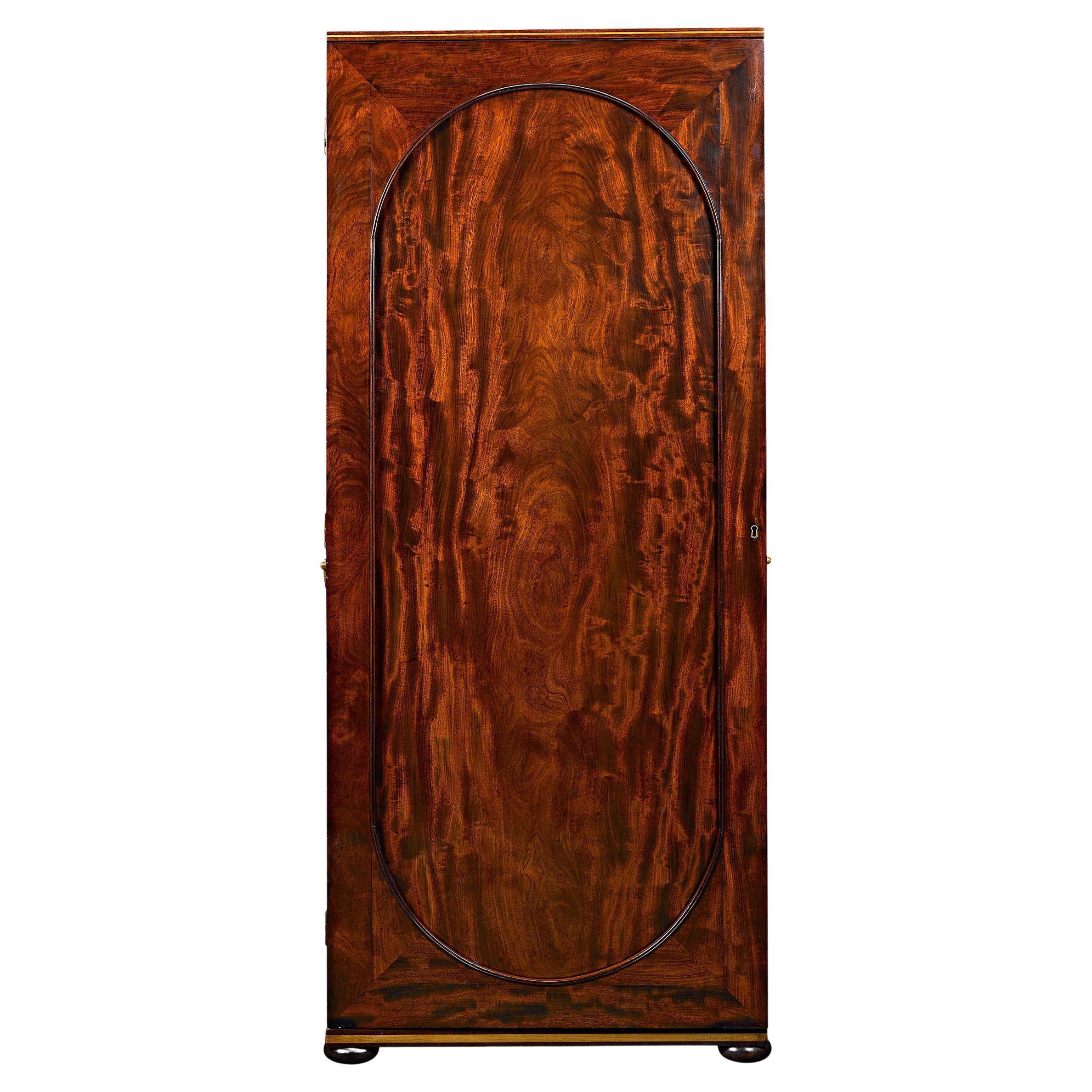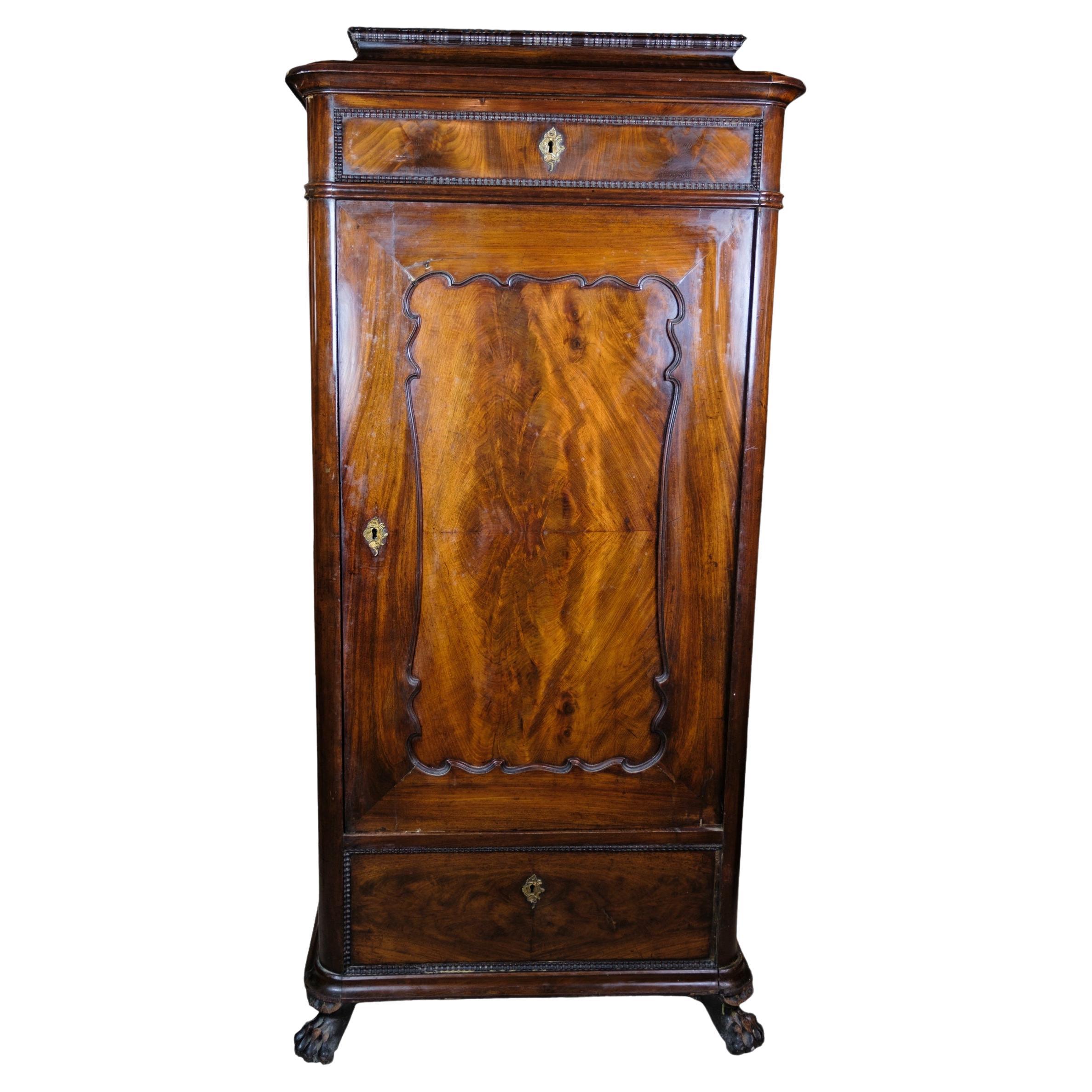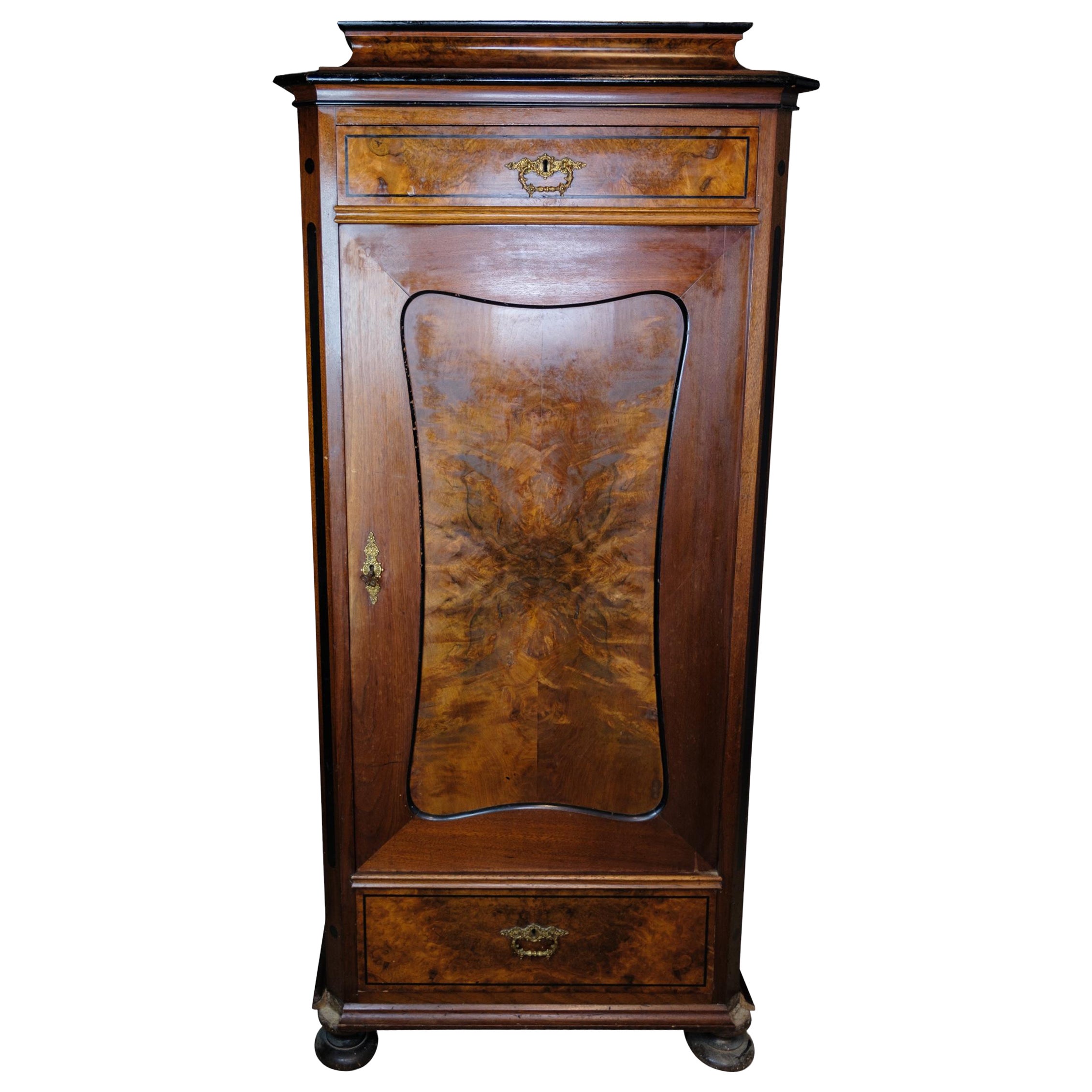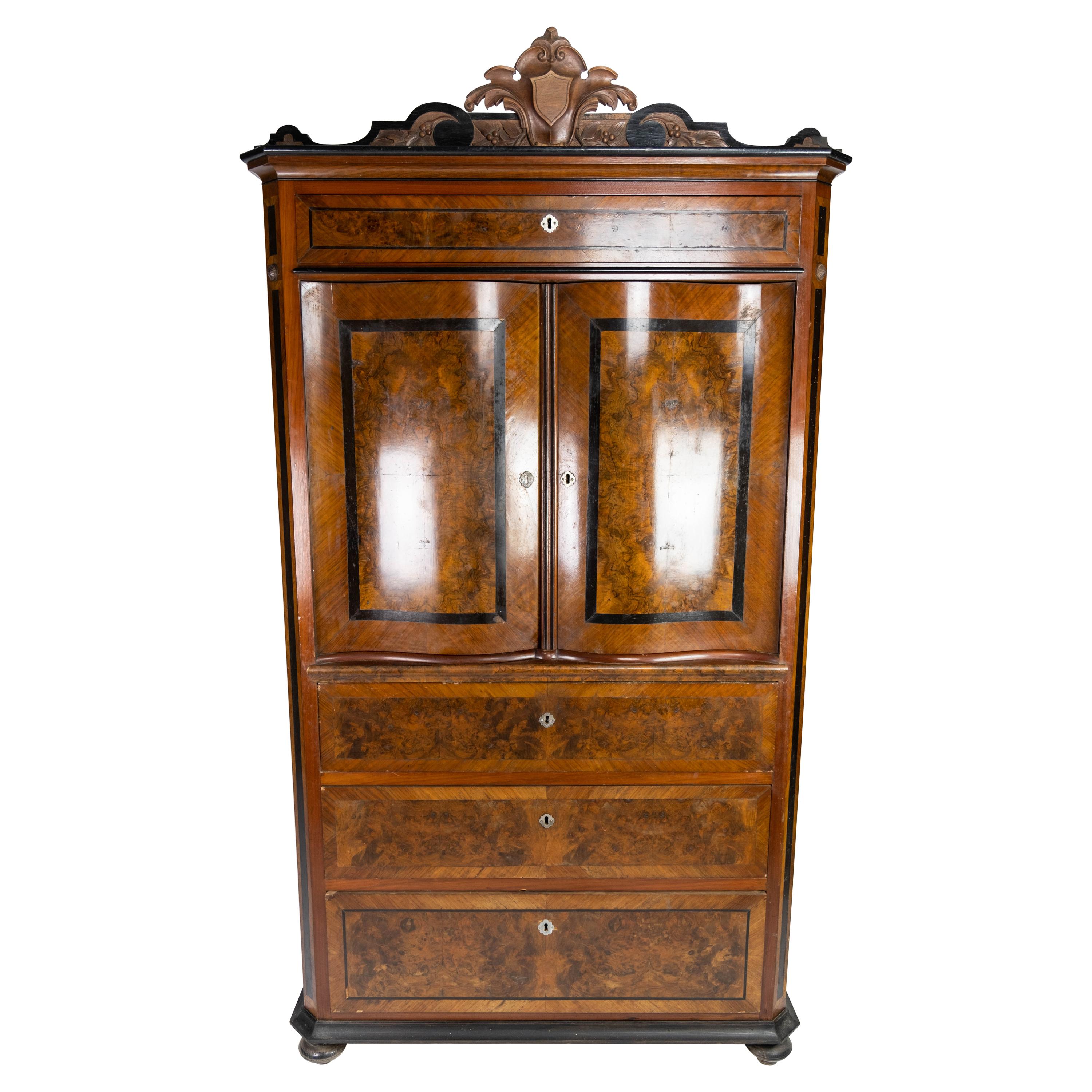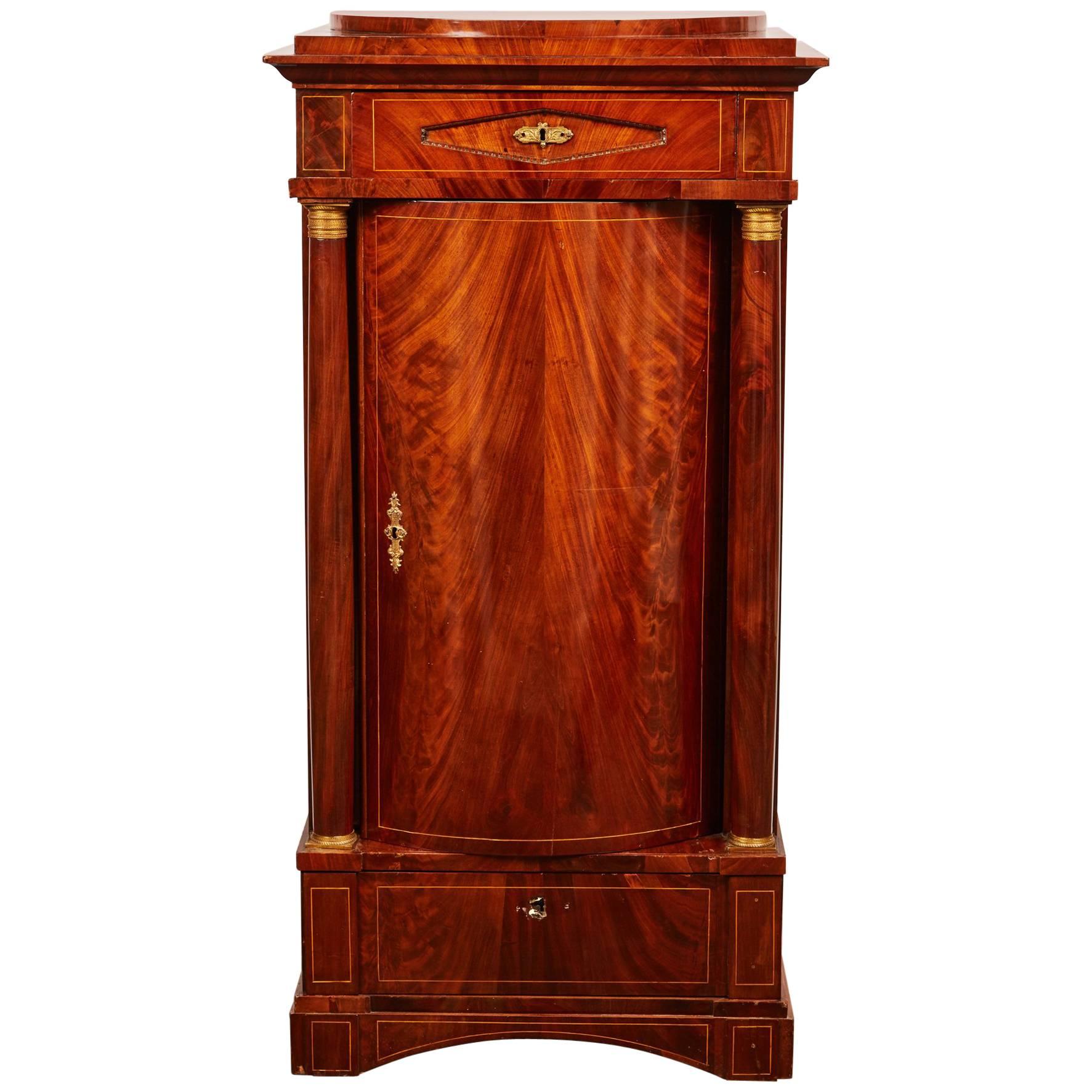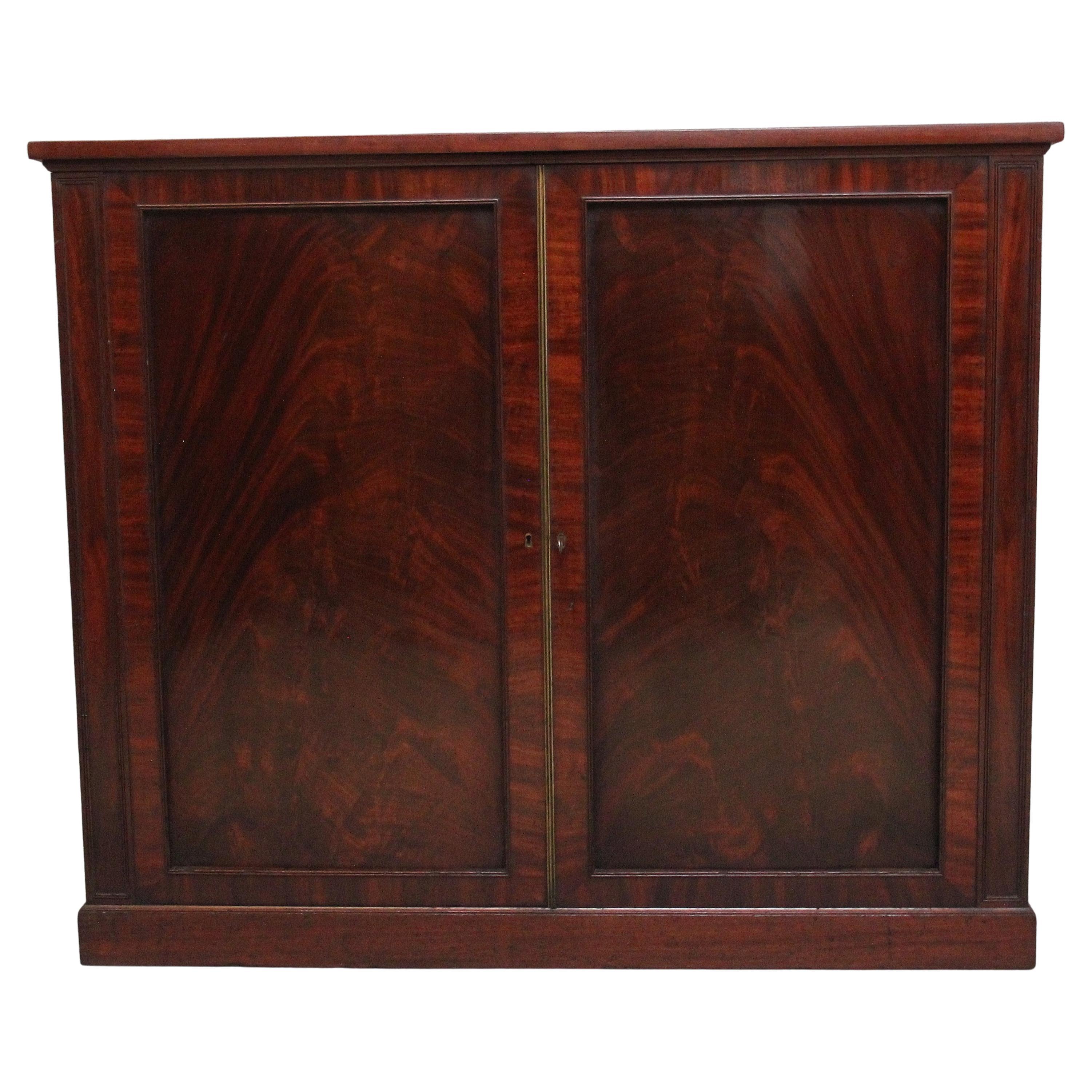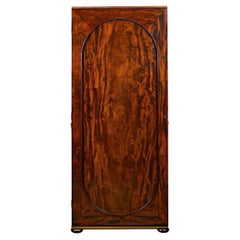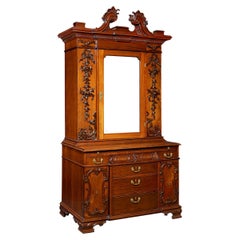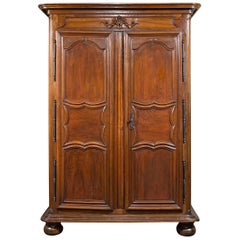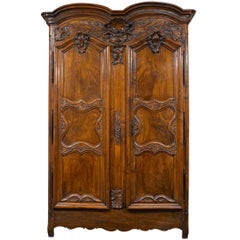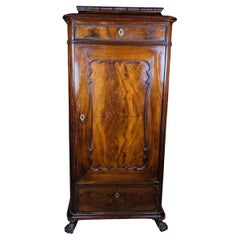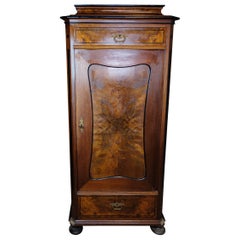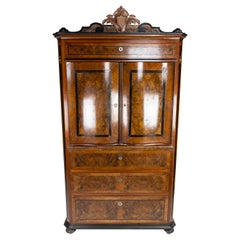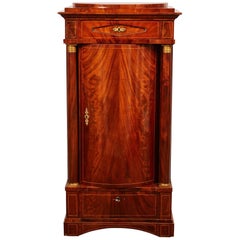Items Similar to Mahogany Upright Cane Cabinet
Want more images or videos?
Request additional images or videos from the seller
1 of 5
Mahogany Upright Cane Cabinet
$28,500
£21,648.08
€24,945.93
CA$40,135.06
A$44,495.65
CHF 23,384.20
MX$544,553.75
NOK 292,044.87
SEK 274,113.33
DKK 186,205.85
About the Item
Classical style and impeccable design distinguish this English upright cane cabinet. Crafted of lustrous Cuban mahogany, this case is comprised of a beautifully paneled door which opens to reveal a three-tiered cane rack that holds 30 walking sticks. The mirrored back is perfect for display and identification, and the door, when opened wider, pulls the rack forward slightly, so that all of one's prized stick are within easy reach. Set upon bun feet and accented with brass bands, this cabinet is a must for the serious collector.
Circa 1880
27 7/8 wide x 10 3/4” deep x 65 3/4” high
- Dimensions:Height: 65.75 in (167.01 cm)Width: 27.88 in (70.82 cm)Depth: 10.75 in (27.31 cm)
- Materials and Techniques:
- Place of Origin:
- Period:
- Date of Manufacture:Circa 1880
- Condition:
- Seller Location:New Orleans, LA
- Reference Number:Seller: 30-10101stDibs: LU891135983242
About the Seller
5.0
Recognized Seller
These prestigious sellers are industry leaders and represent the highest echelon for item quality and design.
Established in 1912
1stDibs seller since 2010
111 sales on 1stDibs
Typical response time: 9 hours
- ShippingRetrieving quote...Shipping from: New Orleans, LA
- Return Policy
Authenticity Guarantee
In the unlikely event there’s an issue with an item’s authenticity, contact us within 1 year for a full refund. DetailsMoney-Back Guarantee
If your item is not as described, is damaged in transit, or does not arrive, contact us within 7 days for a full refund. Details24-Hour Cancellation
You have a 24-hour grace period in which to reconsider your purchase, with no questions asked.Vetted Professional Sellers
Our world-class sellers must adhere to strict standards for service and quality, maintaining the integrity of our listings.Price-Match Guarantee
If you find that a seller listed the same item for a lower price elsewhere, we’ll match it.Trusted Global Delivery
Our best-in-class carrier network provides specialized shipping options worldwide, including custom delivery.More From This Seller
View AllEnglish Upright Cane Cabinet
Located in New Orleans, LA
This English cane cabinet exhibits classical style and impeccable design. Crafted of lustrous Cuban mahogany, this upright case features a beautifully paneled door which opens to rev...
Category
Antique 19th Century English Cabinets
Materials
Brass
$28,500
Mahogany Bureau Cabinet After Thomas Chippendale
By Thomas Chippendale
Located in New Orleans, LA
This extraordinary Irish bureau cabinet was crafted based on a design for a desk and bookcase drawn from Thomas Chippendale’s famed 1762 edition of The Gentleman and Cabinet-Maker's ...
Category
Antique 18th Century Irish Chippendale Cabinets
Materials
Mirror, Mahogany
19th Century French Provincial Armoire
Located in New Orleans, LA
This fine French provincial double door armoire is beautifully crafted of fine walnut. Adorned with elegant, Rococo-inspired molding and featuring exceptional well-preserved, origina...
Category
Antique 19th Century French Rococo Wardrobes and Armoires
Materials
Walnut
French Provincial Double Door Armoire
Located in New Orleans, LA
This majestic French walnut armoire is a stunning example of the Provincial style. Standing nearly nine feet high, this rare armoire featuring splendid rocaille carvings above its do...
Category
Antique 18th Century French French Provincial Wardrobes and Armoires
Materials
Wood, Walnut
John Henry Belter Rosewood Armoire
By John Henry Belter
Located in New Orleans, LA
One of the rarest furniture forms created by John Henry Belter, this armoire is a testament to this legendary cabinet maker's talent. Recognized as a Pioneer in design and craftsmans...
Category
Antique 19th Century American Rococo Revival Wardrobes and Armoires
Materials
Rosewood
19th Century Regency Mahogany Pedestal Sideboard
Located in New Orleans, LA
This monumental English mahogany sideboard captures the luxury of the Regency era in grand style. Crafted in the neoclassical taste, the sideboard evokes the stately forms of ancient...
Category
Antique 19th Century English Regency Sideboards
Materials
Mahogany
You May Also Like
Tall Cabinet in Polished Mahogany from the 1850s
Located in Lejre, DK
Tall cabinet of polished mahogany in beautiful antique condition with 2 drawers and a door with shelves from the 1850s.
Measurements in cm: H:155 W:6...
Category
Antique 1850s Danish Cabinets
Materials
Mahogany
$1,516 Sale Price
20% Off
Tall Cabinet Made In Polished Walnut From 1850s
Located in Lejre, DK
High cabinet of polished walnut, nice antique condition with 2 drawers and a door with shelves from the 1850s
Measurements in cm: H:155 W:67 D:43.5
Category
Antique 1850s Danish Other Cabinets
Materials
Walnut
Large Cabinet Made In Polished Mahogany & Walnut From 1880s
Located in Lejre, DK
This secretary from the 1880s is a masterpiece of craftsmanship and elegance. Crafted from polished mahogany and walnut, it exudes timeless beauty and sophistication. The secretary's...
Category
Antique 1880s Danish Other Cupboards
Materials
Mahogany, Walnut
$1,801 Sale Price
20% Off
19th Century Danish Mahogany Empire Cabinet
Located in San Marino, CA
A remarkably elegant 19th century Empire cabinet that features beautiful crotch mahogany veneer. A drawer above one door that encloses three stationary shelves as well as a drawer be...
Category
Antique 1820s Danish Empire Cabinets
Materials
Mahogany
Early 19th Century mahogany cabinet
Located in Martlesham, GB
Early 19th Century mahogany cabinet / bookcase of nice proportions, having a figured rectangular top above two hinged doors opening to reveal two adjustable shelves, the moulded door...
Category
Antique 1820s British Regency Cabinets
Materials
Mahogany
Cuban Mahogany Cabinet by Kaare Klint for Rud Rasmussen
Located in Sagaponack, NY
An impeccable cabinet in rich Cuban mahogany having a pair of doors concealing five pull out shelves, over three exposed drawers (one locking) with brass 'handlebar' pulls, resting o...
Category
20th Century Danish Cabinets
Materials
Wood
More Ways To Browse
Bun Feet Cabinet
Antique Kitchen Cabinet Pulls
Cane Furniture England
Antique Mirror Kitchen Cabinets
Antique English Cabinet Pulls
Tiered Display Cabinet
Cuban Mahogany Furniture
8 Panel Door
English Mirror Cabinet
Antique Three Panel Mirror
3 Door Display Case
English Style Kitchen Cabinets
Mahogany Collectors Cabinet
Cane Doors
Mahogany Cabinet With Mirror Back
Antique Walking Canes
Walking Sticks
Antique Cane Walking Stick
